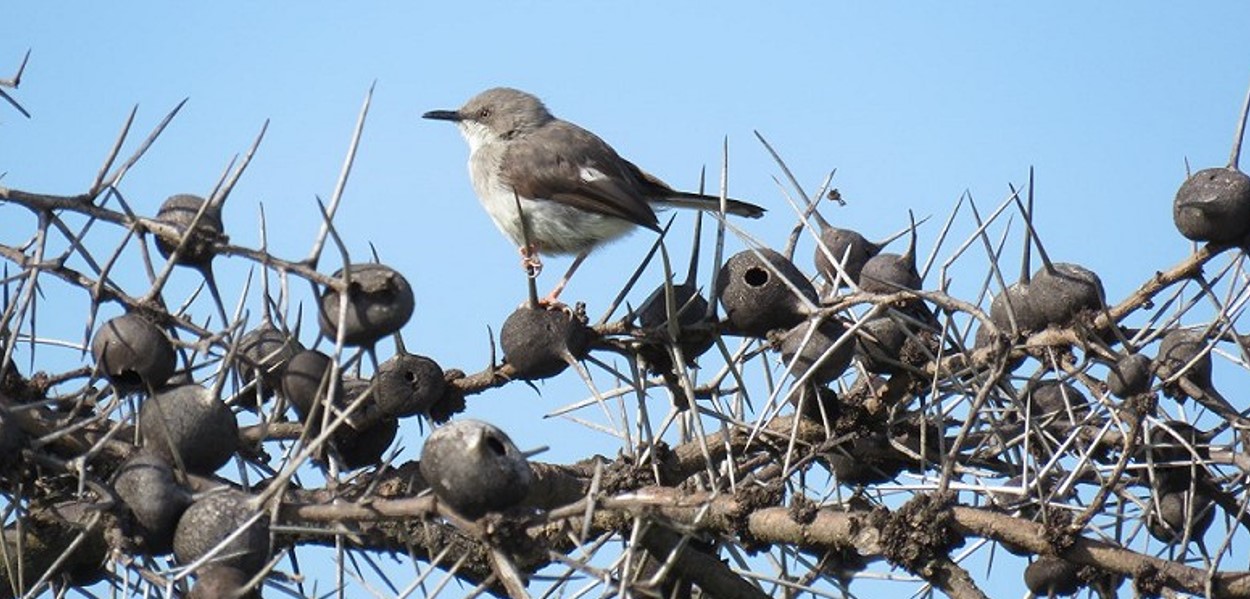
The Karamoja Apalis in Uganda
The Karamoja Apalis in Uganda: The Karamoja Apalis (Apalis karamojae) is a unique bird species that has drawn the interest of both bird enthusiasts and conservationists. Uganda is noted for its rich biodiversity and breathtaking landscapes. The tale of this tiny, elusive bird is one of both intrigue and concern. It is a symbol of the untamed beauty of Uganda’s shrublands.
About the Karamoja Apalis in Uganda
The Karamoja Apalis in Uganda is a warbler that is found in damp shrublands that are either subtropical or tropical. It has a preference for Acacia drepanolobium, which is a whistling thorn. Its delicate presence is most noticeable in northeastern Uganda, where it actively forages and maintains the ecological balance of its habitat by fluttering among the forest.
Not only is this bird a beautiful sight, but as a result of habitat loss brought on by human activity, this species is vulnerable and may not survive. Any changes made to its habitat could have a disastrous effect on the bird’s existence because it prefers a certain kind of shrubland. Due of its status as a gauge of the ecosystem’s health in the area, the Karamoja Apalis has thus come to be the focus of conservation efforts.
In order to better understand the population dynamics and habitat needs of the Karamoja Apalis in Uganda, surveys and research are being done as part of continuous efforts to safeguard the species. For example, the bird has been seen in several places in Uganda, including the Kidepo National Park and the area surrounding Mount Moroto, where its habits and interactions with the surroundings offer important information for conservation plans.
The precarious state of the Karamoja Apalis serves as a sobering reminder of the precarious equilibrium between human growth and the environment. It emphasises how crucial sustainable practices are to preserving these kinds of creatures while fostering the development and advancement of human societies.
A chance encounter with a species that personifies the essence of Uganda’s untamed areas, the Karamoja Apalis, is an experience to treasure for those who are fortunate enough to see one. For the rest of us, however, it serves as a wake-up call to support conservation initiatives that protect this amazing nation’s natural history and its avian residents.
In summary, the Karamoja Apalis in Uganda is more than simply a bird; it is a symbol of Uganda’s abundant natural resources and a ray of hope for environmental preservation. Its survival in Uganda’s shrublands will depend on the combined efforts of people, groups, and communities that are committed to protecting the environment. I pray that Uganda’s Karamoja Apalis will always be able to soar freely above the clouds, encouraging upcoming generations to cherish and preserve the natural world.
Where can I find the Karamoja Apalis in Uganda?
This elusive bird is a fragile species of bird that is located mostly in Uganda’s northeast. Kidepo National Park is a well-known spot for birding since it provides a habitat that is essential to the survival of the species. Furthermore, reports of sightings have been made in the vicinity of Mount Moroto, which is a portion of the mountain range that passes through the Karamoja area. The distinctive thorn-scrub environment found in this region is crucial to the survival of the Karamoja Apalis. Because of this species’ affinity for a particular type of habitat and the challenges posed by habitat loss, conservation measures are essential. The Karamoja Apalis is a species of great biodiversity in Uganda, so birdwatchers hoping to see one should concentrate on these areas and support local conservation efforts.
What is the best time to spot the Karamoja Apalis in Uganda?
The months of June through August and December through February are the ideal times to see the Karamoja Apalis in Uganda. Because the weather is usually dryer and the birds are more active during these times, they provide the best circumstances for birding. Small and long-tailed, it is usually seen in small groups or pairs in the acacia woodlands of Kidepo Valley National Park and the area surrounding Mt. Moroto. Plan your visit around these times to ensure that the paths are open and the birds are easily visible for the best birding experience.
